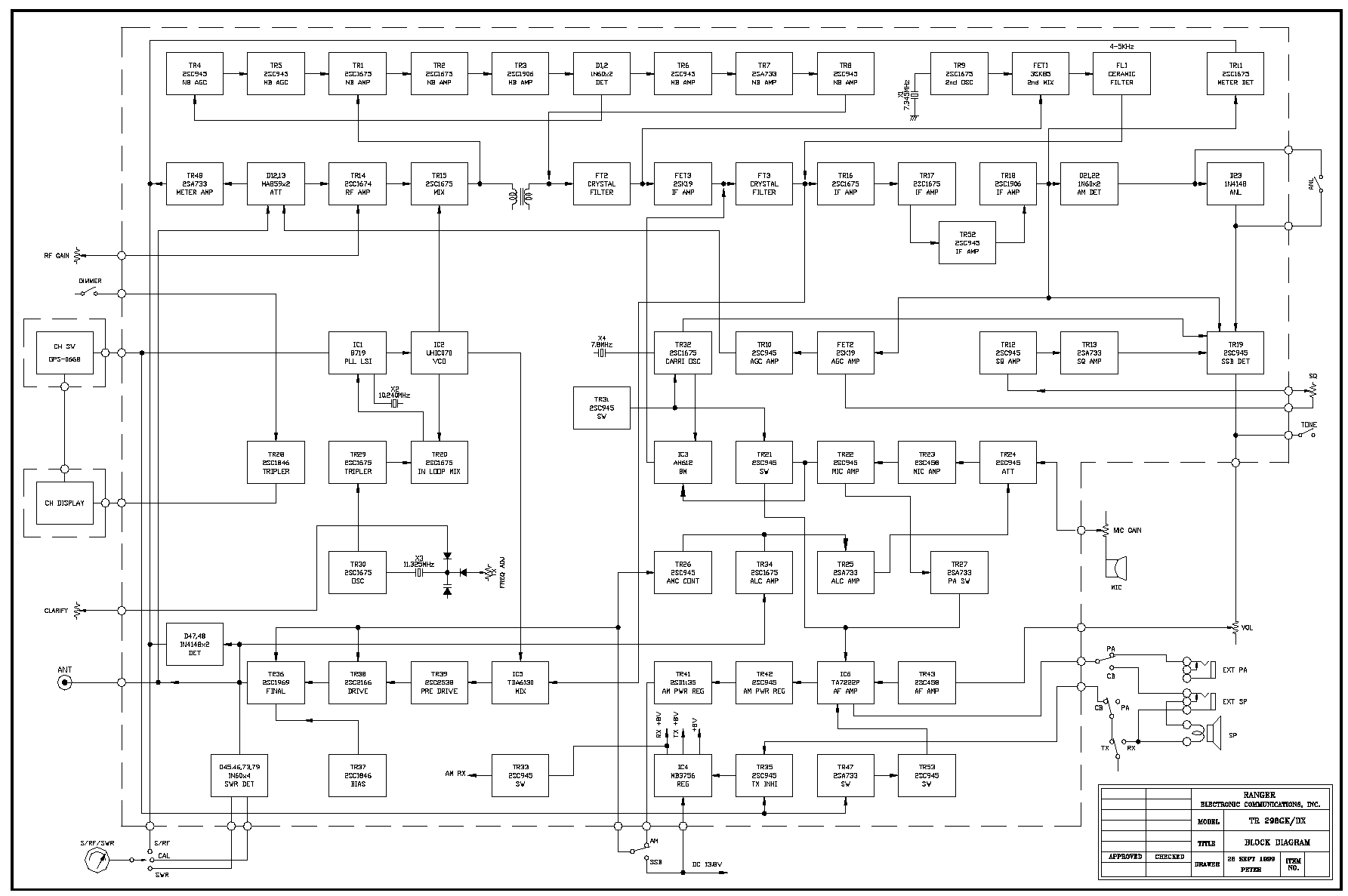

3.0 INTRODUCTION
This section explains the technical theory of operation for the TR-296GK / TR-296DX mobile
transceiver.
3.1 PLL CIRCUIT
The Phase Lock Loop (PLL) circuit is responsible for developing the receiverís first local oscillator
signal and the transmitterís exciter signal. The PLL circuit consists primarily of IC1, IC2, TR20,
TR29 and TR30. The PLL circuit is programmed by the rotary channel switch GPS-0668. The GPS-0668
communicates the correct binary data information to the programmable divider inside of IC1.
IC1 then controls the VCO (Voltage Controlled Oscillator) to oscillate on the correct frequency.
This signal is fed either into the receiverís first mixer (for receive operation) or the transmitterís
mixer (for transmit operation).
3.2 RECEIVER CIRCUIT
The incoming receive signal comes into the radio via the antenna and into the first RF amplifier,
TR14. The RF signal is fed into the mixer, TR15 and then into the AM IF section of the receiver
(depending on the mode of operation). The signal is then detected by either the AM detector or
product detector and then fed to the audio amplifier section of the receiver and finally out to the
speaker.
3.3 TRANSMITTER MODULATION CIRCUIT
(i) The transmitter modulation circuit modulates the low level RF signal from the PLL exciter
circuit with the userís audio voice signal from the microphone. The audio from the microphone
is then amplified and fed into the balanced modulator circuit.
(ii) If the transceiver is in the AM mode, the AF amplifier controls the gain of the last RF amplifier
which produces a true AM signal.
(iii) If the transceiver is in the SSB mode, the audio signal is mixed with 7.800MHz oscillator in
IC3.
3.4 TRANSMITTER AMPLIFIER CIRCUIT
The transmitter takes the basic exciter signal from the TX mixer and amplifies it through a series of
amplifiers consisting of TR39, TR38 and TR36 where it is sent out to the antenna connector.


